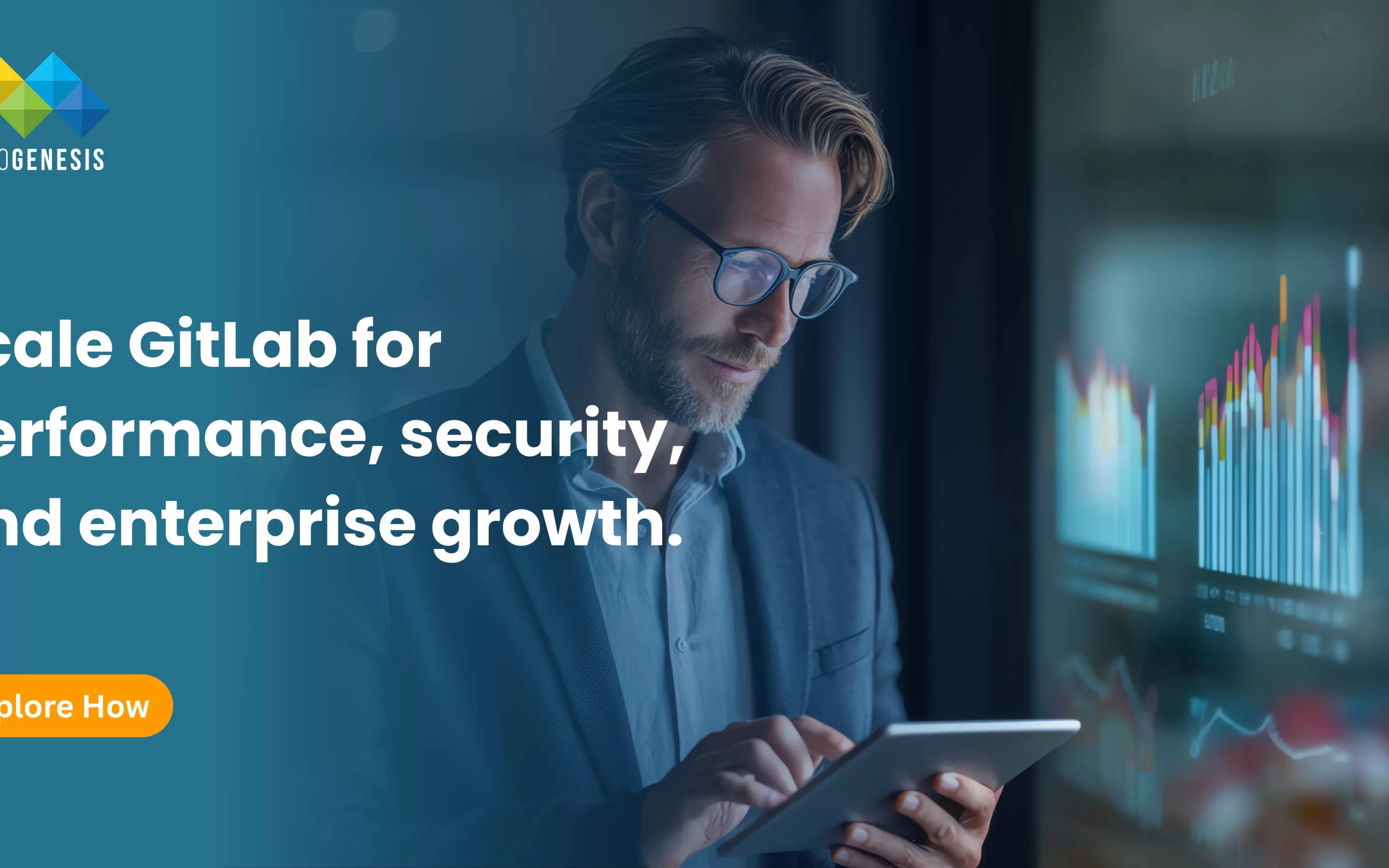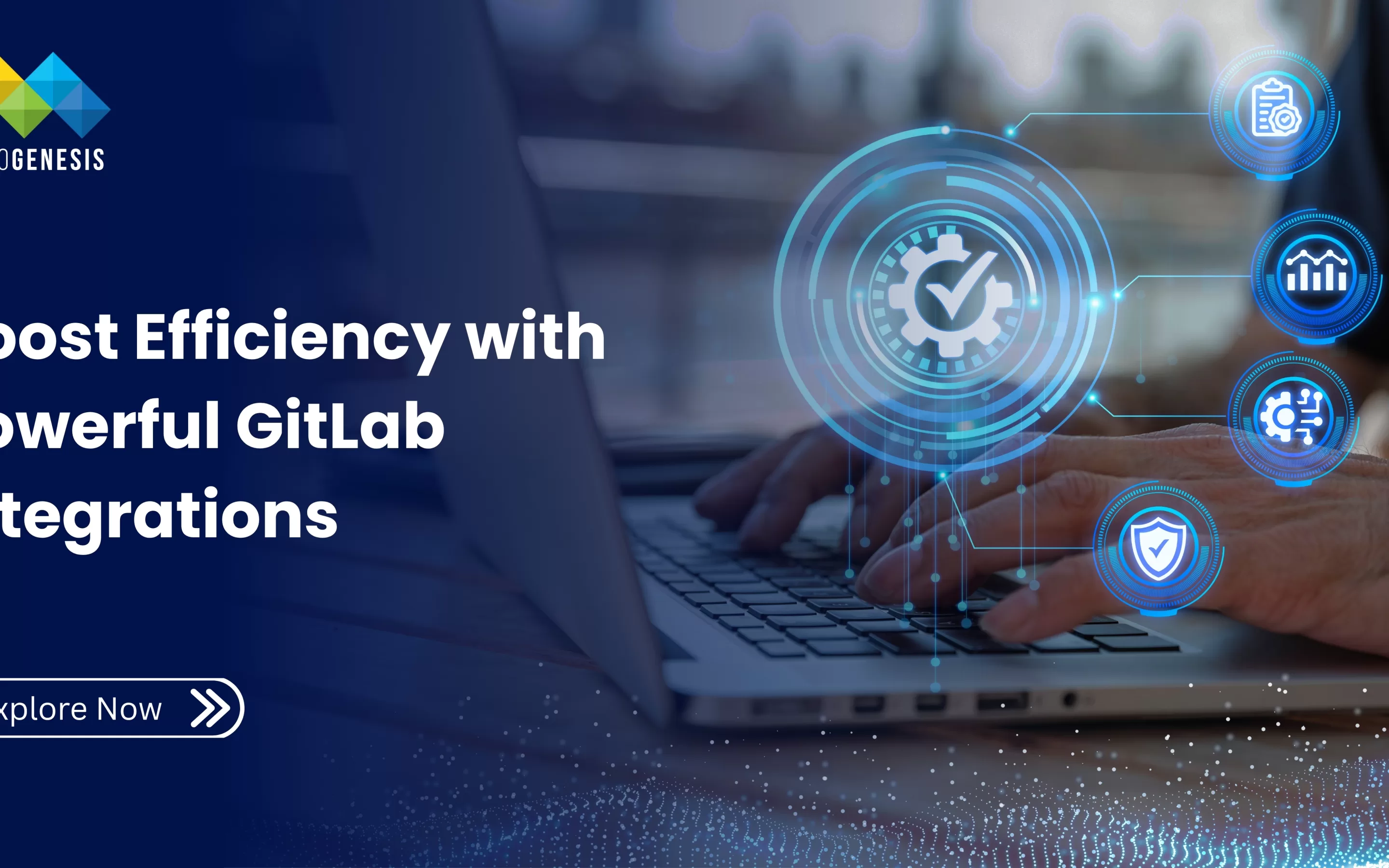In today’s hyper-connected digital economy, software drives everything — from financial transactions and healthcare systems to smart factories and government infrastructure. Yet, the same interconnectedness that accelerates innovation also amplifies risk.
According to industry reports, over 80% of modern software applications rely on open-source dependencies, and nearly half of organizations have experienced supply chain security incidents in recent years. Vulnerabilities can emerge anywhere — in source code, dependencies, build pipelines, or deployment infrastructure.
That’s why software supply chain security has become a top priority for enterprises and regulators alike.
GitLab, as an end-to-end DevSecOps platform, offers a unified framework for protecting the software supply chain — integrating governance, compliance, and automation at every stage. This ensures that security is not a bottleneck but a built-in enabler of reliable, compliant, and trustworthy software delivery.
In this blog, we’ll explore how GitLab helps organizations secure their software supply chain, the challenges they face, and best practices for integrating governance and compliance into automated pipelines.
1. Understanding the Software Supply Chain
1.1 What Is a Software Supply Chain?
A software supply chain comprises all components, dependencies, tools, and processes involved in software development — including:
- Source code repositories
- Third-party libraries and open-source dependencies
- Build and CI/CD pipelines
- Container images and deployment environments
- Distribution and update mechanisms
Each element represents a potential attack vector. For example:
- Compromised open-source libraries may inject malicious code.
- Misconfigured CI/CD pipelines can leak credentials.
- Unsigned containers may be tampered with before deployment.
A secure software supply chain is traceable, tamper-proof, and compliant — from commit to production.
1.2 Why Supply Chain Security Is Critical
The rise of high-profile breaches (e.g., SolarWinds, Codecov) has shown that attackers now target the software delivery process itself.
The risks include:
- Data Breaches: Exposed credentials, secrets, or APIs.
- Integrity Attacks: Code or binaries altered during build or deployment.
- Regulatory Penalties: Violations of compliance standards such as SOC 2, ISO 27001, or HIPAA.
- Operational Disruption: Downtime or delayed releases due to compromised builds.
As organizations scale cloud-native architectures and DevOps pipelines, traditional perimeter security becomes inadequate. The focus must shift from external defenses to integrated, end-to-end pipeline security.
2. The GitLab Approach to Supply Chain Security
2.1 Unified DevSecOps Platform
Unlike fragmented toolchains requiring multiple integrations, GitLab embeds security into a single platform — eliminating blind spots between development, security, and operations. Partnering with expert DevOps consulting services ensures seamless implementation, stronger governance, and optimized workflows that maximize the full potential of GitLab’s integrated DevSecOps capabilities.With GitLab, every pipeline stage — from commit to deploy — includes automated scanning, policy enforcement, and traceability.
2.2 Built-In Security Capabilities
GitLab offers native security scanning and governance features:
- SAST (Static Application Security Testing): Scans source code for vulnerabilities before build.
- DAST (Dynamic Application Security Testing): Tests running applications for runtime flaws.
- Dependency Scanning: Identifies known vulnerabilities in open-source components.
- Container Scanning: Checks images for vulnerabilities before deployment.
- License Compliance: Flags non-compliant open-source licenses.
These capabilities create a shift-left security model, where vulnerabilities are detected early — reducing remediation costs and risk exposure.
2.3 Traceability and Transparency
Every commit, pipeline run, and deployment is logged and traceable. GitLab’s audit logs, merge request approvals, and artifact signing provide verifiable evidence of code integrity — critical for compliance and investigations.
3. Core Pillars of GitLab Supply Chain Security
3.1 Governance and Role-Based Control
Security begins with governance. GitLab provides Role-Based Access Control (RBAC), allowing organizations to define who can:
- Commit code
- Approve changes
- Trigger deployments
- Manage integrations
This minimizes insider threats and enforces least-privilege access.
Example: A healthcare provider configured RBAC to ensure only authorized security engineers can modify compliance policies, while developers can only view scan results — aligning with HIPAA standards.
3.2 Policy-as-Code Automation
Manual security reviews are slow and inconsistent. GitLab’s Policy-as-Code approach codifies compliance rules in YAML or JSON, automating enforcement during every pipeline run.
For example:
compliance:
approvals:
minimum: 2
sast_scan: required
license_check: true
Policies can enforce:
- Minimum approval requirements
- Mandatory security scans
- Restricted dependencies
- License checks before merge
By automating compliance, enterprises ensure continuous adherence without manual policing.
3.3 Signed Artifacts and Provenance
To prevent tampering, GitLab supports digital signatures for artifacts and container images. Each build artifact includes metadata linking it to the specific commit, build, and developer responsible.
This provenance data provides verifiable proof of origin — essential for software bill of materials (SBOM) generation and compliance.
Example: A government agency adopted GitLab’s signed artifact feature to comply with executive orders on software provenance, ensuring all binaries deployed to production were cryptographically verified.
3.4 Vulnerability Management and Remediation
Detection alone isn’t enough. GitLab consolidates findings from multiple scans into a single security dashboard, where teams can:
- Prioritize issues based on severity and impact.
- Assign vulnerabilities to specific developers.
- Track remediation progress.
Automated merge requests can even propose fixes directly — accelerating resolution and improving developer productivity.
4. GitLab in Action: Securing Each Stage of the Pipeline
4.1 Source Stage — Code Integrity
Security starts with the source:
- Enforce signed commits using GPG keys.
- Restrict branch protection and merge approvals.
- Enable pre-commit hooks for static analysis.
Example: A fintech company implemented mandatory code signing in GitLab to ensure accountability and prevent unauthorized commits.
4.2 Build Stage — Dependency and Image Security
During the build phase:
- Use GitLab’s dependency and container scanning to detect vulnerable packages.
- Integrate with Snyk or Aqua Security for deeper analysis.
- Store dependencies in private registries with controlled access.
By automating these scans, organizations can block insecure builds before they reach production.
4.3 Test Stage — Automated Quality and Compliance Checks
GitLab pipelines can incorporate testing frameworks and compliance scripts:
- Run SAST, DAST, and infrastructure compliance tests in parallel.
- Validate licenses and code coverage thresholds.
- Generate compliance reports for audit readiness.
Example: A manufacturing firm used GitLab CI/CD to run 500+ automated compliance tests for ISO 26262 validation, cutting audit preparation time from weeks to hours.
4.4 Deploy Stage — Trusted Delivery
GitLab ensures deployment integrity through:
- Signed containers and verified artifact promotion.
- Deployment approvals requiring dual authorization.
- Integration with Kubernetes admission controllers for policy validation.
Enterprises can also leverage GitLab’s environment management to isolate staging, QA, and production with strict approval gates.
4.5 Operate Stage — Continuous Monitoring
Post-deployment, GitLab integrates with tools like Prometheus, Grafana, and Datadog for runtime observability and anomaly detection.
Alerts can automatically trigger rollbacks or incident response workflows, minimizing downtime and impact.
5. Regulatory and Industry Compliance
GitLab’s integrated compliance features help organizations meet industry-specific regulations, including:
| Standard | GitLab Support | Example Use Case |
| GDPR | Access control, audit logs, data retention policies | EU-based SaaS providers |
| HIPAA | Encryption, RBAC, signed artifacts | Healthcare applications |
| ISO 27001 | Continuous audit trails, policy-as-code | Financial enterprises |
| SOX / SOC 2 | Traceability from commit to deployment | Public companies |
| NIST 800-218 (SSDF) | SBOM and provenance tracking | Government agencies |
By embedding these controls into pipelines, GitLab ensures compliance is achieved continuously, not reactively during audits.
6. Best Practices for Supply Chain Security with GitLab
6.1 Shift Security Left
Integrate security scanning early in the development process — every commit and merge request should trigger automated scans. This ensures vulnerabilities are caught when they’re easiest to fix. Partnering with experienced DevOps service providers helps organizations implement these automated security practices effectively, ensuring continuous protection and compliance throughout the development lifecycle.
6.2 Implement Immutable Infrastructure
Use Infrastructure as Code (IaC) tools like Terraform or Ansible within GitLab to standardize deployments. Immutable infrastructure reduces configuration drift and enforces consistency.
6.3 Regularly Update Dependencies
Leverage GitLab’s dependency scanning reports to identify outdated or vulnerable packages. Implement automated dependency updates through merge requests.
6.4 Enable Continuous Compliance
Treat compliance as a living process. Automate reporting, version tracking, and artifact verification. Use GitLab’s compliance pipelines to generate up-to-date reports on demand.
6.5 Train Teams on Secure Coding Practices
Tools alone cannot ensure security. Conduct training sessions and embed security champions within development teams to foster a security-first culture.
7. Common Challenges and How to Overcome Them
7.1 Complexity of Multi-Cloud Environments
Modern enterprises often use multiple cloud providers, each with unique security policies.
Solution: Centralize pipeline control in GitLab and enforce consistent policies across environments via Policy-as-Code and RBAC.
7.2 Resistance to Process Change
Developers may perceive security as a productivity barrier.
Solution: Automate security checks within existing pipelines, ensuring minimal manual intervention and no disruption to workflows.
7.3 Lack of Visibility Across Toolchains
Fragmented systems make it difficult to trace artifacts or vulnerabilities.
Solution: Consolidate scanning, reporting, and audit trails within GitLab’s unified dashboard.
7.4 Managing Open-Source Risks
Dependency vulnerabilities are often inherited.
Solution: Use GitLab’s dependency scanning with regular updates, SBOM generation, and automated patching.
7.5 Scaling Security Governance
As teams grow, maintaining consistent policies becomes harder.
Solution: Use GitLab’s hierarchical group structure to enforce global policies that cascade automatically across projects.
8. Case Study: Securing a Global Financial Institution’s Pipeline
A multinational bank operating across 20+ regions faced challenges with tool fragmentation and regulatory compliance. Using GitLab’s DevSecOps platform, they implemented:
- End-to-end RBAC and audit logging.
- Automated scanning for SAST, DAST, and container vulnerabilities.
- Policy-as-code governance for SOX and PCI-DSS compliance.
- Signed artifacts for all production releases.
Outcomes:
- 70% reduction in vulnerability remediation time.
- 100% traceability for audits.
- 40% faster release cycle with zero major compliance findings.
GitLab transformed their development process from reactive security to proactive, automated assurance.
Learn More: The Hidden Costs of Poor DevOps Practices — And How to Avoid Them
9. The Future of Software Supply Chain Security
9.1 AI-Driven Threat Detection
GitLab’s evolving AI capabilities (GitLab Duo) will enhance anomaly detection, automatically flagging suspicious commits or unusual pipeline behavior.
9.2 SBOM Automation
Automated generation of Software Bills of Materials (SBOMs) will become mandatory for compliance with U.S. Executive Order 14028. GitLab already supports SBOM export, offering transparency into dependencies.
9.3 Self-Healing Pipelines
Future DevSecOps pipelines will identify and remediate vulnerabilities autonomously — pausing, patching, and resuming workflows without human intervention.
9.4 Cloud-Native Security Expansion
As enterprises adopt Kubernetes, serverless, and edge environments, GitLab will extend native integrations for runtime protection, container validation, and cloud policy orchestration.
Conclusion
Software supply chain security is no longer optional — it’s a business imperative. In an era where code moves faster than ever, vulnerabilities must be detected and mitigated at the same speed.
GitLab empowers organizations to secure their entire DevSecOps pipeline — embedding governance, compliance, and automation directly into every workflow. From source code integrity and signed artifacts to continuous compliance and audit-ready reporting, GitLab ensures that security is continuous, not reactive.
As one of the Top Custom Software Development Companies, MicroGenesis leverages GitLab’s powerful capabilities to help enterprises build secure, compliant, and high-performing DevSecOps environments that drive continuous innovation and trust.
By leveraging GitLab’s built-in tools and integrating third-party security solutions, enterprises can achieve a holistic, verifiable, and efficient approach to supply chain security.
With the right governance model and automation strategy — supported by GitLab Consulting Partners — organizations can confidently deliver secure, compliant, and high-quality software at scale.




